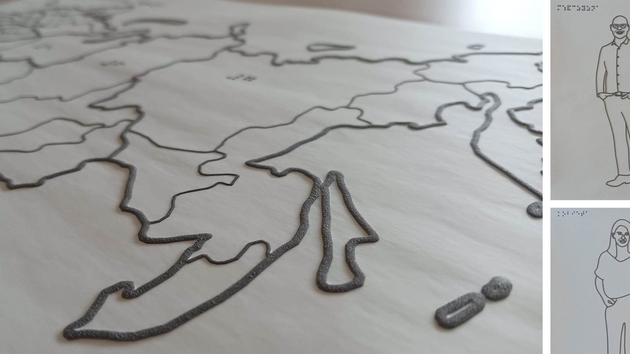University of Lodz implements activities that aim at elimination of barriers regarding access to higher education for people with disabilities, as well as for all people with special needs who not only study at our university but are also a part of its community.
Such activities include, for example, preparation of visual aids – teaching aids in the form of printouts on swell paper (flexi paper) for one of the students of the University of Lodz with visual impairment.
Thanks to the technique of printing on swell paper, we can make the outline of all kinds of graphics available in the relief form. Thanks to such graphics, people with visual impairment can experience, through the sense of touch, the outlines and the most important details of illustrations, objects, maps, images, charts and many more.
The work with the use of materials on swell paper was best summed up by Dr Ełona Curkan-Dróżka:
The availability of teaching materials is crucial for activating students with various types of disabilities. Working with the use of adapted teaching aids helps to eliminate barriers to access to knowledge and enables learners to be fully involved in the teaching process. In the case of my visually impaired student, the possibility of using maps printed on the swell paper with descriptions made in Braille helped in mastering the difficult material and provided a lot of joy. Thanks to the support and commitment of the employees of the Academic Support Centre, University of Lodz the classes I conduct have become fully available to all the students – in my opinion, this is a great achievement that both students and lecturers can benefit from.
Another activity that we are currently focusing on is preparing typhlographic plans in the University of Lodz buildings. These will be placed in 145 locations.
We are planning to start introducing the first typhlographic plans already in January 2023.
Typhlomaps – typhlographic plans are coloured tactile maps addressed to people with visual impairment. They use clear and contrasting graphics. Typhlomaps are composed of Braille descriptions and have a clear and comprehensible plan of movement so that a person can easily move around the described buildings.
Source: Academic Support Centre, University of Lodz

